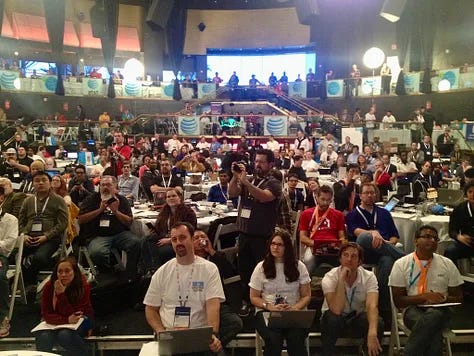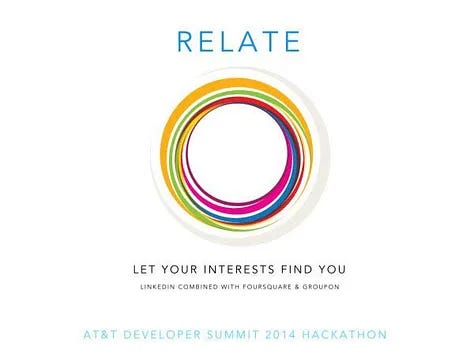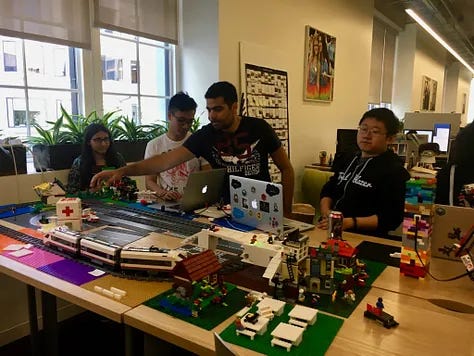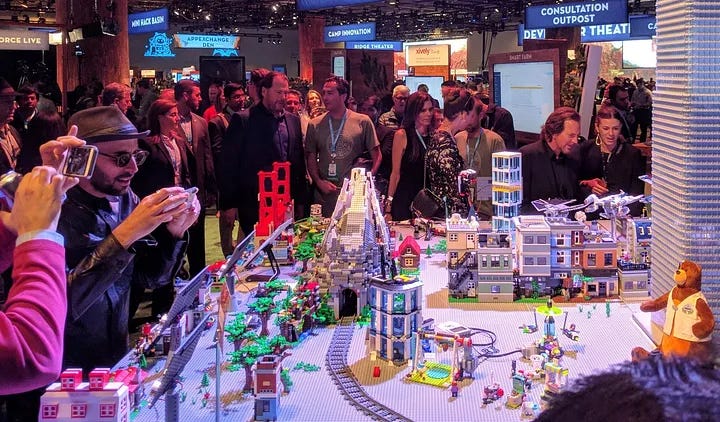The Hackathon Effect
How experimentation turns into innovation and culture turns into impact.
Hackathons have shaped the way I think about innovation, culture, and creativity.
They’re proof that when people are free to explore without permission, amazing things happen, ideas grow, teams connect, and innovation becomes a shared language.
Here’s why I believe everyone, no matter your industry, role, or level in the company, should experience one.
It often starts with an idea, small, uncertain, maybe even a little wild. A few people gather around it, sketching, experimenting, testing what might work. No one’s following a plan. No one’s asking for approval. They’re just building, together.
That’s a hackathon.
And I’ve seen what happens when people are given that kind of freedom. The room feels different, lighter, louder, alive. Hierarchies fade, silos dissolve, and collaboration becomes instinctive. People start connecting in ways they never do in meetings or structured projects. They stop talking about innovation, and actually experience it.
That’s the hackathon effect.
And it builds something far more lasting than code. It builds culture.
If You’ve Never Been to a Hackathon, Here’s What It’s Like
Hackathons trace back to the late 1990s, when open-source communities began experimenting with faster, more collaborative ways to build software.
Developers would gather for 24 or 48 hours to create something new, not for profit or fame, but for the joy of making and learning together.
The name says it all: “hack” in the sense of clever, creative problem-solving, and “marathon”, a focused sprint of imagination and endurance.
The early ones were simple: laptops, snacks, sleepless nights, and a shared sense of possibility.
But they sparked a new way of working, where collaboration outpaced hierarchy and experimentation led to breakthrough ideas.
Some of the world’s best-known products and features, from social media tools to startup concepts, began in hackathons.
But the real legacy isn’t what was built; it’s how people learned to build together.*
It’s the realization that innovation starts with exploration, and that great ideas rarely come from certainty.
Why You (and Every Company) Should Join One
I’ve been part of hackathons across companies, teams, and creative communities.
Every time, the outcome is the same, not in what gets built, but in how people think and feel afterward.
Hackathons create space for what modern work often forgets: freedom, curiosity, and shared discovery.
They spark creativity. When people are encouraged to explore, ideas multiply, fast.
They accelerate learning. In two days, you can test tools or approaches that might take months in a normal workflow.
They break silos. Designers, engineers, marketers, and dreamers work side by side. Hierarchy gives way to shared purpose.
They renew motivation. There’s an energy that comes from building something from scratch, from seeing your idea come alive in hours instead of quarters.
And they ripple outward. Even if a prototype doesn’t ship, the spark it creates travels, influencing future projects, products, and collaborations.
That’s why I see hackathons not as side projects, but as engines of innovation and culture.
They remind people why they joined in the first place: to imagine, to create, and to build something meaningful.
No matter your title, team, or background, there’s a place for you in that process.
When Collaboration Becomes a Force
One of the most memorable hackathons I joined was in Las Vegas, during one of the huge AT&T Hackathons often hosted around the Consumer Electronics Show (CES).
These events are something else entirely, massive creative playgrounds where developers, designers, and innovators come together to build the future in just a weekend.
The focus is on 5G, IoT, and public safety technologies, connecting everything from smart cities to connected health devices.
I teamed up with José Antonio Márquez Russo and , and together we dove into the challenge with the same intensity and curiosity that define every great hackathon.
What we built we called RELATE, an app that combined the best of LinkedIn, Foursquare, and Groupon, designed to help people discover meaningful professional connections through shared interests and nearby to build a team.
It was fun, fast, and a little chaotic to build, the kind of creative sprint where ideas evolve in real time and everyone learns something new. The app itself never went anywhere, but the experience and learning stayed with us all.
That’s the real value of hackathons: even when the project did not win or survive, the mindset does. It changes how you think, how you work, and how you collaborate.
The energy was contagious, long nights, bold ideas, fast prototyping, and spontaneous collaboration between people who had just met but shared the same creative drive.


Beyond Technology
Over the years, I’ve realized hackathons aren’t really about technology at all. They’re about people, and the shared drive to make something new. A musician remixing sounds, a designer rethinking materials, a teacher inventing new ways to engage students, they’re all hacking in their own way.
Exploring through making.
Learning through doing.
Turning limits into inspiration.
The hackathon mindset belongs everywhere: in classrooms, studios, labs, and boardrooms. It’s about curiosity. About turning “what if?” into “why not?” And about realizing that creativity doesn’t wait for perfect conditions, it thrives in motion, collaboration, and courage.
“Creativity doesn’t belong to a department.
It lives wherever curiosity meets courage.”
We tend to talk about creativity as if it’s a role or a process, something that happens in a specific place, owned by a few. But it isn’t. Creativity happens in the moments we step into the unknown, when we experiment, when we connect ideas that weren’t meant to fit, when we dare to ask “what if?”
It’s not a skill reserved for designers or developers, but a mindset that belongs to everyone:
the accountant who automates a task in a smarter way,
the teacher who reimagines how to engage students,
the marketer who tells a story differently,
the engineer who looks beyond requirements and asks why not?
Creativity thrives in curiosity, and it grows when we have the courage to try. That’s what hackathons celebrate: not expertise, but openness. Not perfection, but exploration. And that’s where true innovation, and culture, begins.
The Real Impact
That’s why I believe in hackathons, not just as events, but as a philosophy of innovation. They remind us that technology is most powerful when it amplifies creativity. That culture isn’t written in processes or policies, it’s built in shared experiments and bold ideas. And that impact, real, lasting impact, happens when experimentation becomes part of who we are.
So whether you work in engineering, design, business, art, or education, join a hackathon. Experience what happens when you stop waiting for permission and start building. You don’t need to code to belong there. You just need curiosity, openness, and the courage to create.
Because innovation doesn’t belong to a few. It belongs to everyone, no matter your industry, role, or level in the company.
The future won’t be written by those who wait. It’ll be built by those who experiment, before they’re ready.
A Real Example of the Hackathon Effect
I’ve seen this spirit come to life firsthand.
Years ago, during a hackathon with my team at Salesforce, we decided to use LEGOs to simulate a Smart City using our IoT Cloud Platform in 2017. It started as a playful idea, a way to visualize connected devices communicating through Salesforce data in real time.
This fun hack project quickly gained attention. Our project was later showcased at Dreamforce in San Francisco, where I had the chance to share the experience with our CEO,
, who stopped by to see it in action.And there was another surreal moment I’ll never forget JR, the artist known for his monumental public works, captured a photo of our hack as part of his documentation of the event. I would be thrilled to see the photo he took of our hack one day!
It was the perfect reminder of what hackathons can spark: when creativity, play, and technology intersect, they don’t just generate ideas, they create energy, connection, and culture that spreads far beyond the room.


Building the Next Hackathons
Today, I’m helping build that same spirit of experimentation at TeamSystem, a company that shares this belief in creativity, collaboration, and continuous learning.
We’re designing hackathons not just as events, but as platforms for exploration, places where teams can test new ideas, experiment with emerging technologies, and connect across departments.
Just like the best hackathons I’ve joined before, the goal isn’t only to create prototypes, it’s to build a culture of curiosity.
We’re encouraging people to explore ideas that stretch beyond their daily work, to experiment boldly, and to learn by doing.
Because innovation doesn’t happen in isolation or inside a single team.
It happens when diverse minds collide, challenge each other, and imagine something new together.
That’s what we’re nurturing at TeamSystem: not just innovation through technology, but innovation through people.
Continuing with CODAME
And that same spirit continues to live on through CODAME, where we’ve always believed that creativity, technology, and collaboration belong together.
We’ve hosted countless hackathons over the years, each one blurring the lines between art and tech, between imagination and implementation.
Our next one, “Exploring the New Human”, is coming soon, and it embodies exactly what hackathons are all about: curiosity, courage, and community.
💬 Reflect with me:
Have you ever joined or hosted a hackathon, in tech, art, or life? Reply and tell me what you built, what you learned, or what surprised you most.


